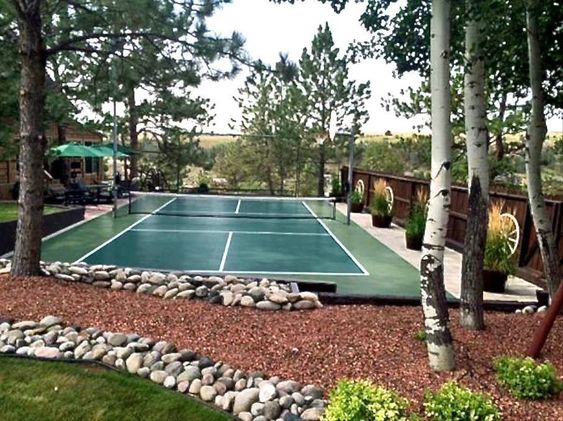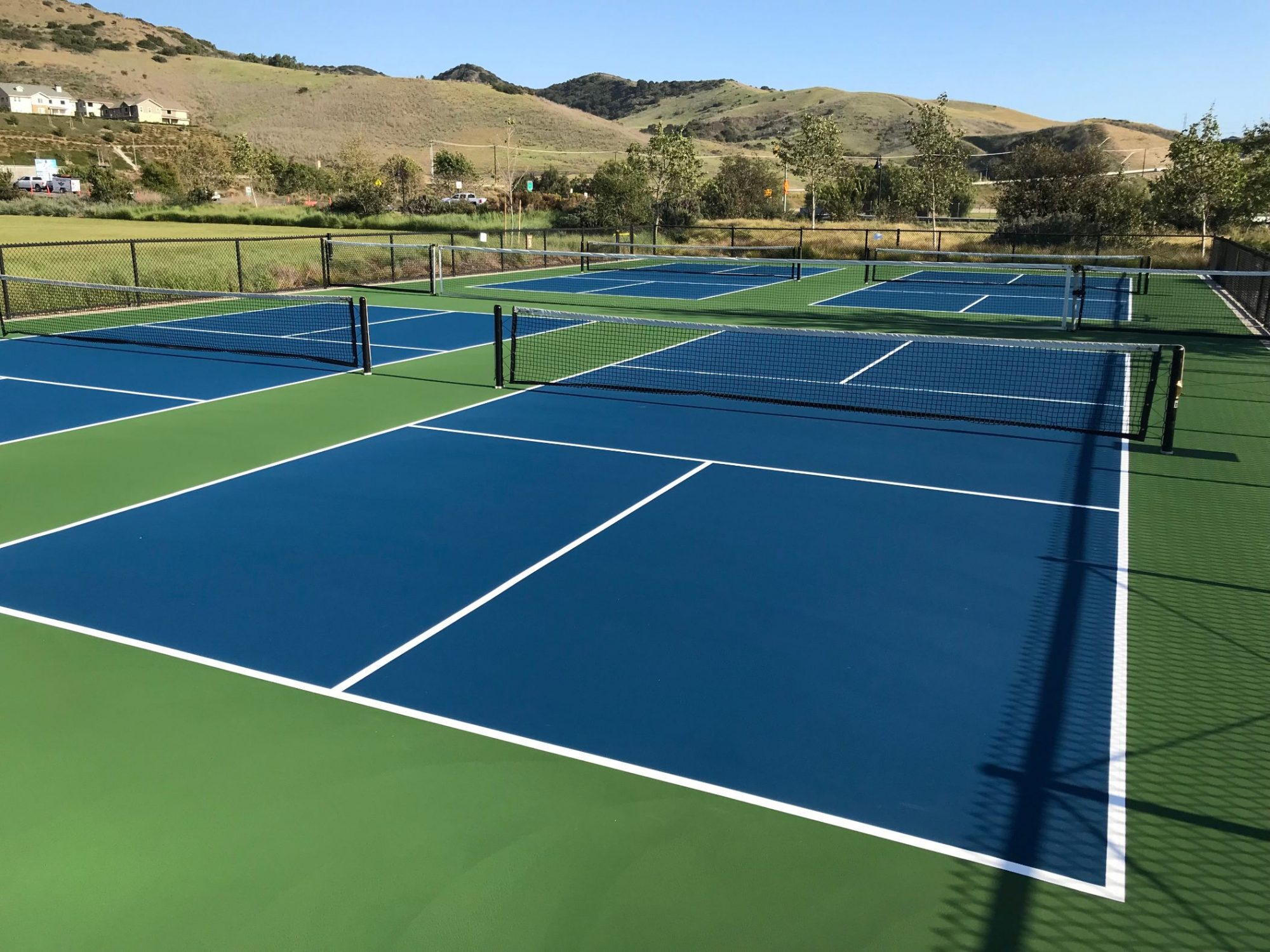Exactly how to Choose the Best Pickleball Courts Design & Construction in Illinois and Midwest
Exactly how to Choose the Best Pickleball Courts Design & Construction in Illinois and Midwest
Blog Article
Key Consider the Building of Pickleball Judiciaries: From Site Option to Final Finishes
The building of pickleball courts includes a series of important elements, starting with the choice of an ideal website that balances accessibility with ecological considerations. Crucial aspects such as court dimensions, surface area products, and drain systems dramatically influence not just the top quality of play yet additionally the long life of the facility. Attention to lights and ending up touches can boost the total experience for players and spectators alike. Recognizing exactly how each of these parts interrelates may reveal insights that are often neglected, motivating a better exam of finest practices in court building and construction.
Website Selection Standards
When beginning on the building of pickleball courts, it is vital to pin down the website option criteria that will make sure ideal playability and accessibility. The location should be conveniently reachable for gamers, ideally positioned near houses or recreation center, to encourage involvement.
Additionally, the terrain should be degree and stable, as irregular ground can lead to security dangers and impact gameplay. Sufficient drainage is also important; picking a website with excellent water runoff will help preserve court problems during damaging weather condition.
One more crucial consideration is the availability of utilities. Accessibility to electricity and water is needed for illumination and upkeep functions. Additionally, distance to auto parking facilities is important, promoting simple access for gamers and spectators alike.
Ecological aspects can not be overlooked; all-natural color from trees can enhance player convenience, while direct exposure to prevailing winds may interfere with play. Lastly, zoning laws and community support need to be thought about to guarantee that the project aligns with neighborhood guidelines and gets the support it needs for effective implementation. By meticulously examining these requirements, stakeholders can create a welcoming and useful atmosphere for pickleball lovers.
Court Dimensions and Format
To make sure optimum gameplay and adherence to guidelines, the dimensions and design of pickleball courts must be thoroughly specified. A basic pickleball court gauges 20 feet in size and 44 feet in size for both singles and doubles play. The advised format consists of a non-volley area, generally described as the "kitchen area," expanding 7 feet from the net on either side. This area is important, as it affects gamer positioning and shot selection - Illinois and midwest.
The web elevation is established at 36 inches at the sidelines and 34 inches at the facility, creating a mild dip that impacts ball trajectory. Court markings are just as vital; lines need to be 2 inches large and unique in shade to ensure visibility.
In addition, a barrier zone bordering the court is recommended, normally expanding 5 to 10 feet past the sidelines and baselines to fit players' additional resources movements and boost safety and security. Appropriate layout and measurements not only ensure conformity with main guidelines however also boost the general playing experience, suiting both leisure and affordable play. Mindful planning in these locations is paramount to the effective building and construction of pickleball courts.
Surface Material Options
Picking the best surface area material for pickleball courts is critical for making certain ideal player efficiency and safety and security. The choice of surface area can considerably affect gameplay, consisting of ball bounce, grip, and player comfort.
There are numerous alternatives readily available, each with its unique attributes. Asphalt is a preferred selection as a result of its resilience and low maintenance needs. It supplies a strong playing surface that can endure different weather condition problems but might require periodic resurfacing.
Concrete is another extensively used material, offering excellent durability and a smooth surface. It permits regular sphere bounce but can be tough on players' joints, making it less preferable for lasting play without proper padding.
For those looking for boosted convenience and shock absorption, supported acrylic surfaces provide a viable alternative. These surfaces combine a base layer with an acrylic topcoat, giving boosted traction and a softer feeling, which is valuable for minimizing the risk of injuries.
Last but not least, artificial grass is gaining traction, particularly for multi-purpose why not try these out centers. Its versatility and lower upkeep needs make it an eye-catching choice, though it may not offer the very same round action as typical difficult courts. Mindful consideration of these choices will make sure an ideal playing setting.
Drain and Lighting Considerations
Appropriate water drainage and effective lights are necessary components in the building of pickleball courts, dramatically affecting both playability and security. Sufficient drain systems avoid water accumulation, which can lead to slippery surface areas and damages to the court framework.
Lights is equally critical, especially for courts planned for night use. Proper illumination boosts visibility, ensuring that players can see the round plainly and minimizing the threat of crashes. The placement of illumination components ought to be purposefully planned to get rid of shadows and give even distribution of light throughout the court. LED lights are suggested for their power efficiency and long life, using bright illumination while minimizing operational costs.

Final Finishes and Upkeep
After addressing drainage and lights considerations, attention transforms to the final surfaces and recurring maintenance of pickleball courts. Typical choices include acrylic coatings and specialized sports surfaces that offer optimum traction and cushioning.

Seasonal maintenance could include resurfacing every few years, relying on usage and ecological aspects. Properly preserving webs, court lines, and surrounding locations is similarly vital to give a risk-free and enjoyable having fun experience. By spending in high quality coatings and sticking to an organized upkeep schedule, facility owners can guarantee their pickleball courts continue to be in excellent problem for years to find.
Final Thought
To conclude, the successful building of pickleball courts pivots on careful attention to numerous essential aspects. Website option should these details prioritize access and terrain security, while court measurements and layout must abide by ideal criteria for gameplay. The selection of surface area material substantially influences gamer safety and efficiency. Effective drainage and ample illumination add to court durability and presence. Lastly, top quality surfaces and a robust maintenance schedule are important for preserving the court's condition, enhancing the overall experience for players and viewers alike.
Report this page